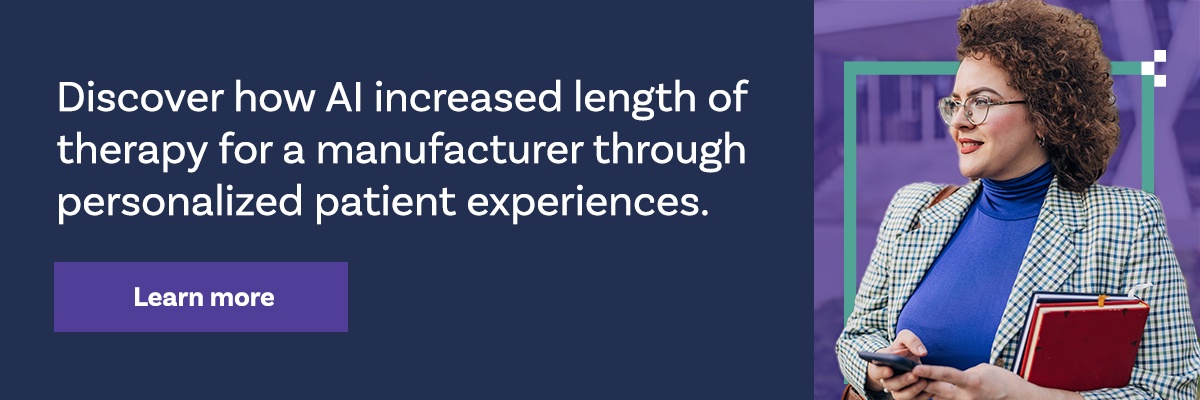Pharmaceutical companies spend more than $5 billion on patient support programs each year, but only 3 percent of patients actually use them.
So what gives? What does an effective patient support program look like, and why do so many fall short? How can you optimize your patient support programs to boost engagement, encourage therapy initiation, and improve patient adherence?
Let’s talk about how to ensure your patient support program is as effective as possible:
What Does an Effective Patient Support Program Look Like?
Historically, patient support programs have been primarily rules-based, designed to follow a linear set of steps for each individual regardless of their unique situation, needs, goals, and preferences. Rules-based interventions are not only less likely to influence behavioral change, but also less effective and cost-efficient.

As a result, many pharmaceutical companies seek new ways to optimize their patient support programs to achieve better results at a lower cost. This leaves many asking the same question: What exactly does an effective patient support program look like, and how do we adapt to maximize our own?
The most effective patient support programs use omni-channel technologies that are personalized and leverage patient-level data. As they seek to improve their results, many healthcare organizations are embracing artificial intelligence (AI) technology—supplemented by machine learning and predictive analytics—to optimize existing patient support programs and deploy new, more effective interventions.
5 Steps You Can Take to Optimize Your Patient Support Program
With a forward-thinking, consumer-driven approach, you can optimize your patient support programs—both new and existing—to boost patient engagement and enhance your overall results. Here are five steps to help you get started:
1. Use diverse data to inform decision-making
With so much data available to us, it would be a shame not to make use of it. Your patient support program should be driven by large, robust datasets that provide multiple views of patient behavior. Data can be pulled from many different sources, including medical records and claims, historical engagement data, consumer behaviors, social determinants of health (SDOH), and more.
2. Target patients that need the most support
Patient identification and prioritization plays a critical role in the effectiveness of patient support programs. Some patients are more likely to be influenced by an intervention, whereas others may be less responsive. Using AI, you can predict which patients have the highest risk of becoming non-adherent or experiencing another gap in therapy. Then, you can take it a step further to only target those who are likely to be influenced by an intervention.
3. Adopt a multi-channel engagement strategy
As technology evolves and new communication channels emerge, taking a multi-channel (or better yet an omni-channel) approach to patient outreach has become increasingly important. Rather than deploying only phone-based interventions, more healthcare organizations are embracing other channels, such as text messages, emails, chatbots, direct messages, in-person and video appointments, and more.
4. Personalize interventions for each individual
Personalized messaging is just as important as personalized channels. Some patients are more likely to benefit from high-touch engagements, such as educational content shared over the phone. Others may benefit more from low-touch engagements, like refill reminders. In addition to personalizing intervention channels and content, pay attention to the timing and cadence of your messages for the greatest impact.
5. Learn and make program adjustments as you go
AI-powered personalization gets smarter as it learns from new data, and you can do the same. By continually analyzing data and collecting helpful insights, you can identify opportunities for improvement and refine your patient support program over time.
Using Healthcare AI to Deliver Personalized Patient Engagement
Each of the five steps we outlined above has a common denominator: AI. Using the right healthcare AI technology, you can optimize new and existing patient support programs and take a more personalized approach to outreach—all without blowing through your budget.
